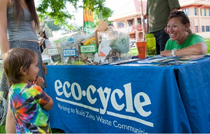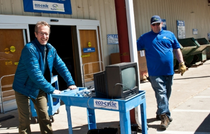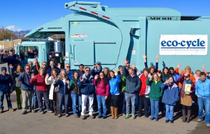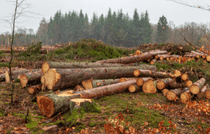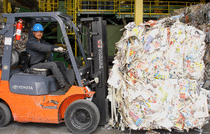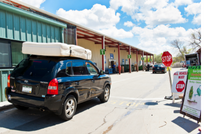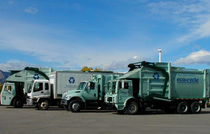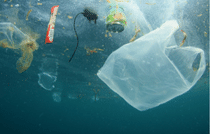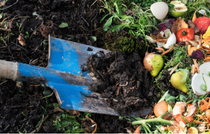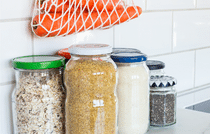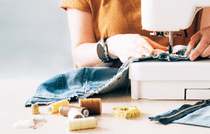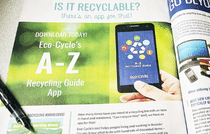Show the Earth Some Love This Valentine’s Day
Make the planet your Valentine and celebrate sustainably with these tips!
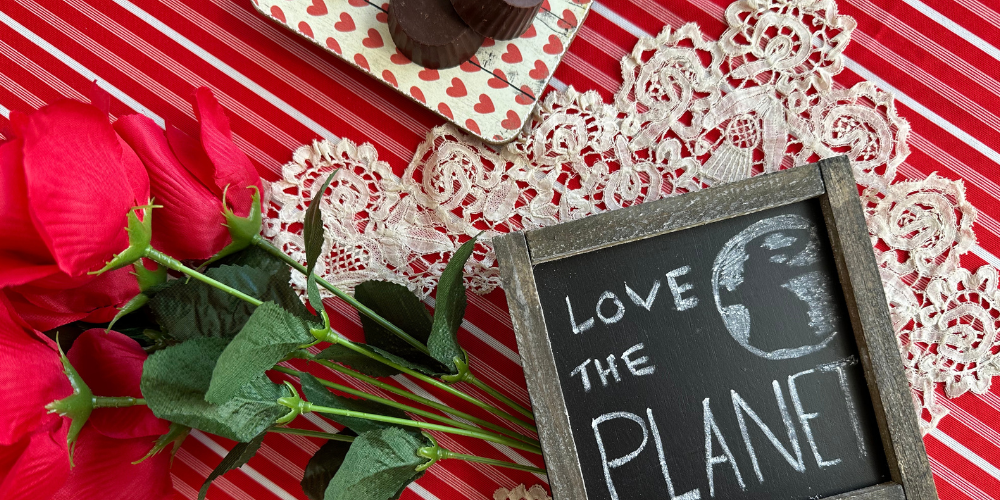
Valentine’s Day traditionally comes with a lot of consumerism. Store shelves exploding with mass-produced toys, trinkets, and decor—much of which will see but a brief period of use before ending up in landfills—can be disheartening and feel counterproductive to Zero Waste ethics.
But as with most things in life, with a little ingenuity this holiday can get a Zero Waste makeover that lets its favorable parts shine—such as the celebration of love for others and oneself—while avoiding the more problematic aspects of the day.
Recycled Paper Cards
There are some great sustainable options out there for how to show your loved one you care on Valentine’s Day. You can send a digital Valentine, or shop for a cool vintage/secondhand card at a creative reuse center (such as Art Parts in Boulder, or ReCreative in Denver) or neighborhood thrift store.
If you want to go a step further, getting crafty with upcycling is a great way to create meaningful, one-of-a-kind gifts your loved ones will cherish, while keeping materials like nonrecyclable papers and fabric scraps out of the landfill, and preventing the consumption emissions generated by the production of new stuff.
Watch as Molly, one of Eco-Cycle’s Front Desk Educators, shows how to create the perfect recycled paper card that can be customized to any occasion or holiday. This tutorial is great for DIY beginners and craft veterans alike!
Sustainable Flowers
Everyone loves fresh flowers, but unfortunately, they represent a multibillion-dollar global industry that tends to carry an extremely high environmental cost in the form of transportation, since most flowers sold in the US are grown abroad in places such as the Netherlands and Colombia. Cut flowers must be flown in and shipped under constant cold-chain conditions to keep them fresh, all of which consumes gobs of energy and fossil fuels.
A staggering 77% of flowers sold in the US are imported instead of being grown domestically, and more flowers are sold in the US during Valentine’s season than any other time of year. There’s also the matter that most conventionally produced flowers are grown with the use of pesticides, including neonicotinoids, a class of chemicals that are toxic to humans as well as bee populations.
If buying flowers is a priority this year, try to find locally grown, pesticide-free flowers to support the growers and florists in your community. Look for these labels when purchasing: “local,” “pesticide-free,” “organic,” “fair-trade,” “no-neonicotinoid,” and “seasonal.” Some options we know of in the Front Range region of Colorado include:
- Petals Flower Farm in Boulder offers local, chemical-free fresh and dried arrangements in neighborhood-hosted suburban greenhouses.
- Blossom and Branch Farm in Denver (for the smallest carbon footprint, they recommend buying “forced bulbs,” which don’t require additional light and only need minimal heat to produce).
- Find a comprehensive list of local flower farmers in Colorado, and the florists that work with them, compiled by Artemis Flower Farm, near Longmont!
If access to any of these options isn’t available in your community, but you live near a Whole Foods, consider one of their more sustainable flower options through the Sourced for Good program.
Of course, the most sustainable flowers, in the end, are going to be the not-fresh ones. Some alternatives to fresh flowers include dried flower arrangements (which are often available locally, including at some of the sources listed above), and artificial flowers (which can usually be found in your local creative reuse center or thrift store, and last forever).
Zero Waste & Ethical Chocolate
The other gift typically associated with Valentine’s Day is a heart-shaped box of chocolates. This tradition goes back to the 1860s, when brothers Richard and George Cadbury (of Cadbury Cream Egg fame) took over the family business and invented an ornate style of packaging as a marketing ploy to sell chocolate. Aesthetics-loving Victorian consumers were known to keep these chocolate boxes after they were empty for storing correspondence and other keepsakes—an early example of upcycling!
These days, heart-shaped chocolate boxes are usually pretty flimsily made, being designed for cheap production and single-use disposal, so the incentive to keep them after they’re empty is low. Chocolate is also a highly contentious trade commodity with enormous social and environmental impacts, including destroying rainforests. When buying chocolates, look for labels such as the Rainforest Alliance label (which certifies environmental and social stewardship), “organic,” or “local.”
Check out this list of Boulder chocolate shops by Dame Cacao, which includes and goes beyond locally headquartered Chocolove, a large-scale producer offering products that meet the above certification standards. And don’t forget about the package-free chocolates that may be available at your local bulk store, such as Nude Foods Market, a Zero Waste grocery store with locations in Boulder and Denver.
The good news is, the foil wrappers from prepackaged chocolates can be recycled if added to larger foil balls. Keep adding aluminum foil until you create a ball that is at least 2 inches in diameter, then toss it in your curbside recycling bin!

